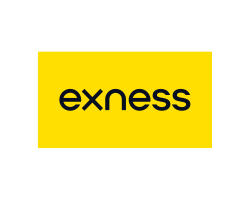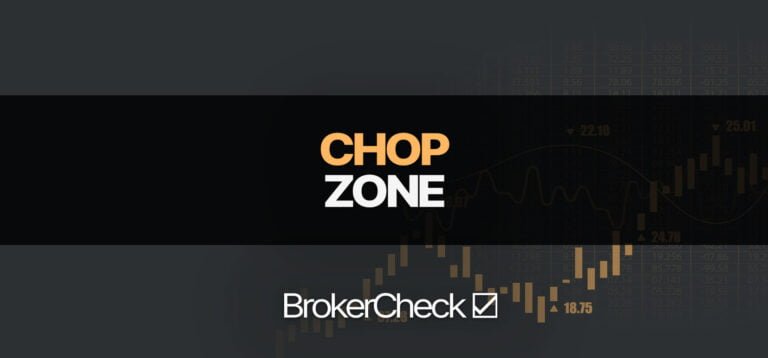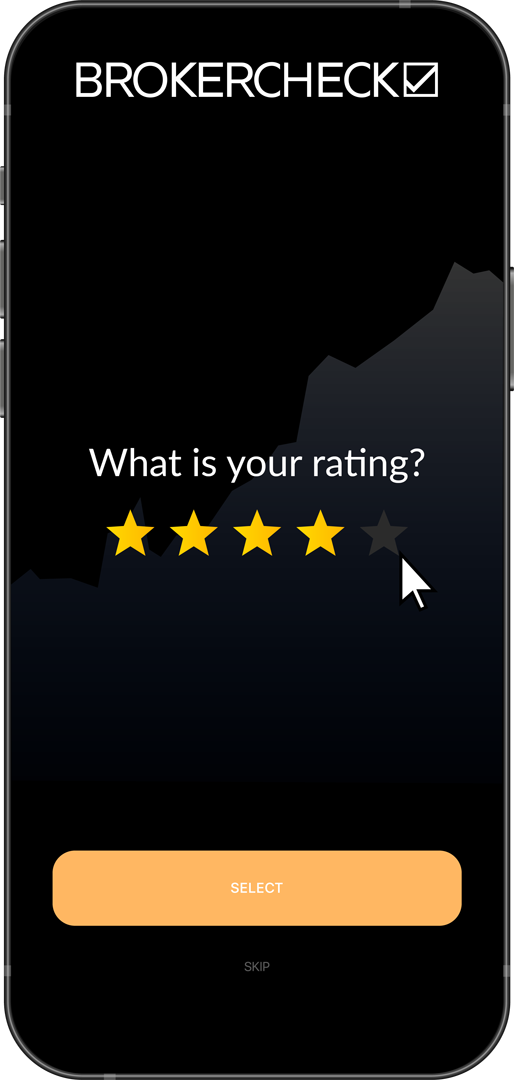1. Understanding Exponential Moving Average (EMA)
Exponential Moving Average (EMA) is a potent tool in the hands of a savvy trader, capable of illuminating potential market trends with a degree of precision that can seem almost uncanny. Unlike the Simple Moving Average (SMA), which assigns equal weight to all data points, the EMA gives more importance to recent data. This is a critical distinction, as it allows the EMA to react more quickly to price changes, making it a favorite among traders looking to capitalize on short-term market trends.
To calculate the EMA, traders use a formula that incorporates a smoothing factor. This factor is derived from the period of the EMA. For instance, a 10-day EMA would have a smoothing factor of 2/(10+1) = 0.1818. This factor is then applied to the most recent price, with the previous day’s EMA used as a starting point. The formula is as follows: EMA = (Closing price – EMA(previous day)) x multiplier + EMA(previous day).
But what does this mean in practical terms? In essence, it means that the EMA can provide traders with a real-time snapshot of market trends. When the EMA is rising, it signals a potential uptrend, suggesting that it may be a good time to buy. Conversely, a falling EMA may indicate a downtrend, implying that selling might be the better option.
However, it’s important to remember that, like all trading tools, the EMA is not infallible. It’s just one piece of the puzzle, and successful trading requires a holistic approach that takes into account a variety of factors. Nonetheless, when used correctly, the EMA can be a powerful ally in the quest for trading success.
1.1. Definition of EMA
At the heart of any successful trading strategy lies the understanding of key technical indicators, and the Exponential Moving Average (EMA) stands as one of the most pivotal. The EMA, a type of moving average, assigns a greater weight and significance to the most recent data points. Unlike the Simple Moving Average (SMA) that assigns equal weight to all data points, the EMA’s unique weighting system allows it to react more swiftly to price changes.
The EMA’s calculation is a two-step process. Initially, the SMA is calculated for a specific period. Following this, a multiplier is calculated for the EMA’s smoothing factor, which is then applied to the price data. The formula for the EMA is: EMA = (Close – Previous Day’s EMA) * multiplier + Previous Day’s EMA. Here, the ‘Close’ is the closing price for the day, and the ‘multiplier’ is calculated based on the number of periods chosen for the EMA.
The EMA’s sensitivity to recent price fluctuations makes it an invaluable tool for traders looking to identify market trends. By smoothing out price data and allowing users to pinpoint trends over specific periods, the EMA serves as a reliable compass in the volatile sea of trading. Whether you’re a day trader looking to capitalize on short-term price movements or a long-term investor seeking to understand broader market trends, the Exponential Moving Average is a crucial addition to your technical analysis toolkit.
1.2. The Importance of EMA in Trading
Exponential Moving Average (EMA) is a critical tool that no trader can afford to overlook. A key player in the world of technical analysis, EMA provides traders with the ability to identify market trends in a more responsive manner compared to its cousin, the Simple Moving Average (SMA).
The EMA is a weighted average that gives more importance to recent price data. This means it reacts more quickly to recent price changes, making it an ideal tool for traders who need to make swift, informed decisions. The EMA’s sensitivity to price fluctuations can be a double-edged sword, offering both opportunities for high profits and risks of significant losses.
Understanding the EMA is not just about knowing how it works, but also about understanding its practical applications in the trading world. Traders use the EMA to generate trading signals, with the crossing of two EMAs often serving as a buy or sell signal. For example, when a short-term EMA crosses above a long-term EMA, it signals a bullish trend, indicating it might be a good time to buy. Conversely, if a short-term EMA crosses below a long-term EMA, it signals a bearish trend, suggesting it might be a good time to sell.
The EMA is also used in conjunction with other technical analysis tools to confirm market trends and generate more reliable trading signals. For instance, traders often use the EMA with the Relative Strength Index (RSI) to identify overbought or oversold conditions in the market.
In the volatile world of trading, the Exponential Moving Average is a beacon of light, guiding traders through the murky waters of market trends. It’s not just a tool, but a powerful weapon in a trader’s arsenal, helping them navigate the market with confidence and precision. The EMA, with its emphasis on recent price data, ensures traders are always one step ahead, ready to seize opportunities as they arise.
1.3. The Calculation of EMA
Delving deeper into the world of trading, let’s unravel the intricacies of the Exponential Moving Average (EMA). No matter the volatility of the market, EMA stands as a beacon for traders, guiding them through the tumultuous waves of stocks and securities. But how is EMA calculated? What is the magic formula that makes it such a reliable indicator?
The calculation of EMA is a two-step process. First, the Initial Simple Moving Average (SMA) is calculated by adding together the closing prices of a security for a certain number of time periods and then dividing this total by that same number of periods. This gives us the average price of the security over the time period.
Once we have the SMA, we can proceed to the second step: calculating the Multiplier. This multiplier is crucial in determining the weight of the most recent price data. The formula for the multiplier is [2 / (selected time period + 1)]. For instance, if we select a 10-day EMA, the formula becomes [2 / (10 + 1)] which equals approximately 0.1818.
Now we are ready to calculate the EMA. The formula for EMA is [(Close – previous EMA) * multiplier + previous EMA]. The ‘Close’ refers to the closing price of the security for the day. By plugging in the values into this formula, we get the EMA for the day.
Remember, the EMA is more sensitive to recent price changes compared to the Simple Moving Average. This means that it is a faster indicator, providing trading signals ahead of those signaled by the SMA. However, this also means that the EMA can be more volatile, and may give more false signals.
Understanding the calculation of EMA is crucial for any trader. It’s not just about knowing the formula, but understanding the logic behind it. With the power of EMA, you can navigate the financial markets with more confidence and precision. Happy trading!
2. Using EMA in Trading Strategies
Exponential Moving Average (EMA) is a versatile tool that can be leveraged in various trading strategies. It gives a higher weighting to recent prices, which makes it more responsive to price action compared to its cousin, the Simple Moving Average (SMA). As a trader, this responsiveness can be a game-changer.
One popular strategy that utilizes EMA is the EMA Crossover. In this strategy, two EMAs with different time periods (a shorter one and a longer one) are plotted on the price chart. When the shorter EMA crosses above the longer EMA, it signals a potential upward trend, and it may be a good time to buy. Conversely, when the shorter EMA crosses below the longer EMA, it signals a potential downward trend, and it may be a good time to sell.
Another strategy is the Three EMA strategy. This involves using three EMAs with different time periods (short, medium, and long). The intersections of these three EMAs can provide more nuanced signals. For instance, when the short EMA crosses above both the medium and long EMAs, it indicates a strong upward trend. When the short EMA crosses below both the medium and long EMAs, it indicates a strong downward trend.
But remember, no strategy is foolproof. It’s essential to use other forms of analysis (like fundamental analysis or other technical indicators) to confirm the signals given by the EMA. Moreover, it’s crucial to have a solid risk management plan in place. With careful planning and execution, EMA can be a powerful weapon in a trader’s arsenal.
EMA Pullback is another strategy that traders often use. In this strategy, traders look for a pullback (a temporary reversal of the prevailing trend) to the EMA line as a potential entry point. This strategy works on the premise that price will often retrace to the EMA before resuming the original trend.
Lastly, EMA can also be used in conjunction with other technical indicators for a more comprehensive trading strategy. For example, traders can use EMA in combination with the Relative Strength Index (RSI) to identify potential overbought or oversold conditions. When the EMA indicates an uptrend and the RSI is below 30 (indicating oversold conditions), it can be a potential buy signal. Conversely, when the EMA indicates a downtrend and the RSI is above 70 (indicating overbought conditions), it can be a potential sell signal.
In the end, how you use EMA will depend on your trading style and risk tolerance. But with its responsiveness to price action and versatility in various strategies, EMA can be a valuable tool in your trading toolkit.
2.1. Identifying Market Trends with EMA
Exponential Moving Average (EMA) is a dynamic trading tool that allows traders to identify market trends with precision. Unlike the Simple Moving Average (SMA), which assigns equal weightage to all data points, the EMA gives more importance to recent data. This makes it a more responsive indicator to recent price changes, providing traders with a real-time reflection of market trends.
Consider a market scenario where prices have been on a steady rise. If you plot an EMA line on your trading chart, it will closely follow the price line. As prices rise, the EMA line rises too. But here’s the catch – the EMA line is slightly delayed, it lags behind the price line. This is because it’s a trend-following, or lagging, indicator. It’s this lag that makes EMA a powerful tool for identifying market trends.
When the price line crosses above the EMA line, it signals a potential upward trend. This is a bullish crossover and might be a good time to consider buying. Conversely, when the price line crosses below the EMA line, it indicates a potential downward trend. This is a bearish crossover, suggesting it might be time to sell.
But bear in mind, EMA is just one piece of the puzzle. You should always corroborate EMA signals with other technical indicators or market news to make informed trading decisions. Also, the effectiveness of EMA may vary depending on the time frame you’re trading in. For short-term trading, a shorter EMA period (like 10-day EMA) might be more effective. For long-term trading, a longer EMA period (like 200-day EMA) might be more suitable.
Understanding the nuances of EMA can give you a significant edge in the market. It can help you spot potential trading opportunities, manage your risk, and ultimately, make more informed trading decisions. So, whether you’re a seasoned trader or just starting out, mastering the EMA can be a game-changer for your trading strategy.
2.2. EMA as a Support and Resistance Indicator
The Exponential Moving Average (EMA) is not just a tool for identifying trends; it also serves as a dynamic line of support and resistance. This dual functionality makes it a versatile instrument in the trader’s toolkit. When the price of an asset is above the EMA line, the EMA acts as a support level. This means that the price is more likely to bounce off the EMA line rather than break through it. Traders can use this as a signal to buy, banking on the price to continue its upward trend.
Conversely, when the price of an asset is below the EMA line, the EMA acts as a resistance level. Here, the price is more likely to rebound off the EMA line rather than break through it. This can be a signal to sell, as the price may continue to decline.
However, it’s important to remember that while the EMA can act as a support and resistance indicator, it is not infallible. There will be instances when the price breaks through the EMA line. This is why traders should always use the EMA in conjunction with other trading indicators and not rely on it exclusively.
Key points to remember:
-
- When the price is above the EMA line, the EMA acts as a support level.
-
- When the price is below the EMA line, the EMA acts as a resistance level.
-
- The EMA is not infallible and should be used in conjunction with other trading indicators.
2.3. Combining EMA with Other Technical Indicators
Exponential Moving Average (EMA) is a powerful tool that can significantly enhance your trading strategies when combined with other technical indicators. One of the most effective ways to use EMA is by pairing it with Relative Strength Index (RSI). This combination can provide a more comprehensive picture of the market’s behavior.
The RSI measures the speed and change of price movements, typically on a scale from 0 to 100. When the RSI is above 70, it indicates that a security may be overbought, suggesting a potential price drop. Conversely, an RSI below 30 indicates an oversold condition, implying a possible price increase. By cross-referencing these RSI signals with your EMA, you can identify potential buy and sell points more accurately.
Another powerful pairing is the EMA with Bollinger Bands. Bollinger Bands consist of a middle band (which is the EMA), and two outer bands that are standard deviations away from the middle band. When the price touches the upper band, it may signal an overbought condition, and when it touches the lower band, it may indicate an oversold condition. Combining this with the EMA can help traders identify potential price reversals.
Lastly, the EMA can be used in conjunction with MACD (Moving Average Convergence Divergence). The MACD is a trend-following momentum indicator that shows the relationship between two moving averages of a security’s price. When the MACD crosses above the signal line, it generates a bullish signal, indicating it may be time to buy. Conversely, when it crosses below the signal line, it gives a bearish signal, which might be a good time to sell. By using the EMA with MACD, traders can get a better understanding of the market momentum and price trends.
In essence, combining the EMA with these other technical indicators can provide a more comprehensive and accurate picture of the market, helping traders make more informed decisions. However, it’s crucial to remember that no single method guarantees success, and these tools should be used as part of a broader, well-rounded trading strategy.
3. EMA Trading Tips and Best Practices
1. Start with a solid foundation: Before you dive into the world of EMA trading, it’s crucial to have a firm understanding of the basics. This includes understanding how the EMA is calculated, how it differs from the simple moving average (SMA), and how it’s used in trading. Knowledge is power, and the more you understand about the EMA, the better equipped you’ll be to use it effectively in your trading strategies.
2. Use EMA in conjunction with other indicators: While the EMA can be a powerful tool in your trading arsenal, it shouldn’t be the only one. Combining the EMA with other technical indicators like the Relative Strength Index (RSI), Moving Average Convergence Divergence (MACD), or Bollinger Bands can provide a more complete picture of the market and help you make more informed trading decisions.
3. Be patient and disciplined: EMA trading isn’t about making quick bucks. It requires patience and discipline. You need to wait for the right signals before entering a trade, and once you’re in, you need to stick to your trading plan. Impulsive decisions can lead to unnecessary losses.
4. Practice risk management: No matter how confident you are in your EMA trading strategy, there’s always a risk involved in trading. It’s important to have a solid risk management strategy in place. This could involve setting stop-loss orders, diversifying your portfolio, and only risking a small percentage of your trading capital on any single trade.
5. Keep learning and adapting: The financial markets are constantly evolving, and to stay ahead, you need to keep learning and adapting. This involves keeping up with market news, learning about new trading strategies and indicators, and continually refining your EMA trading strategy based on your experiences and the changing market conditions. Remember, trading is a journey, not a destination.
3.1. Choosing the Right EMA Period
Exponential Moving Average (EMA) is a versatile tool in the world of trading, but its effectiveness is greatly influenced by the selection of the right period. The EMA period you choose can make the difference between making a profit and suffering a loss.
The magic of the EMA lies in its ability to give more weight to recent prices. This makes it more responsive to recent price changes. However, the responsiveness of the EMA is directly tied to the period that you select. A shorter period will make the EMA more responsive, while a longer period will make it less so.
Shorter EMA periods are typically chosen by traders who wish to engage in short-term trading. This is because a shorter EMA period will react more quickly to price changes, providing traders with the opportunity to capitalize on short-term price movements. However, the downside to using a shorter EMA period is that it may produce more false signals, as it is more sensitive to minor price fluctuations.
On the other hand, longer EMA periods are favored by traders who have a long-term trading strategy. A longer EMA period will be less responsive to minor price fluctuations, thereby reducing the risk of false signals. However, the trade-off is that a longer EMA period may be slower to react to significant price changes, potentially causing traders to miss out on profitable opportunities.
The key to choosing the right EMA period lies in understanding your trading strategy and risk tolerance. If you are a short-term trader who is comfortable with a higher level of risk, a shorter EMA period may be suitable. Conversely, if you are a long-term trader who prefers to minimize risk, a longer EMA period may be more appropriate.
Remember, there is no one-size-fits-all approach to choosing the right EMA period. It’s all about finding the balance that works best for your specific trading style and goals. Experiment with different EMA periods, observe their effects, and adjust accordingly. With experience and careful observation, you’ll be able to select the EMA period that best enhances your trading strategy.
3.2. Using Multiple EMA Lines
For traders looking to gain an edge in the market, using multiple EMA lines can be a powerful tool. Exponential Moving Averages (EMAs) are a type of moving average that places more weight on recent data points, making them particularly useful for identifying recent trends in the market.
When using multiple EMA lines, traders often look for crossovers as signals to buy or sell. For example, if a shorter-term EMA crosses above a longer-term EMA, this could be seen as a bullish signal and a potential time to buy. Conversely, if the shorter-term EMA crosses below the longer-term EMA, this could be interpreted as a bearish signal and a potential time to sell.
However, it’s important to note that while EMA crossovers can be useful signals, they should not be used in isolation. Other factors such as volume, price action, and other technical indicators should also be considered. Additionally, traders should always have a clear risk management strategy in place, as no indicator is 100% accurate and losses are a part of trading.
In addition to using multiple EMA lines, traders can also use the EMA as a dynamic support or resistance level. If the price is above the EMA line, it could act as a support level, potentially indicating a good time to buy. If the price is below the EMA line, it could act as a resistance level, potentially indicating a good time to sell.
Using multiple EMA lines can add depth to your technical analysis and help you better understand the direction and strength of market trends. However, like all trading strategies, it requires practice and should be used in conjunction with other tools and indicators for the best results.
3.3. Avoiding Common EMA Trading Mistakes
Overtrading is one of the most common mistakes made by traders when using the Exponential Moving Average (EMA). A trader may be tempted to execute multiple trades based on minor EMA crossovers, leading to a higher number of transactions and, consequently, increased transaction costs. It’s crucial to understand that not every EMA crossover signals a profitable opportunity.
Ignoring the bigger picture is another pitfall. Traders often focus solely on short-term EMA periods and overlook the broader market trend. An understanding of long-term EMA trends can provide valuable context and help prevent costly missteps. For instance, if the long-term EMA trend is bullish, it may be wise to ignore short-term bearish crossovers.
Traders also fall into the trap of relying solely on EMA for their trading decisions. While EMA is a powerful tool, it should not be used in isolation. It’s best to combine EMA with other technical indicators like Relative Strength Index (RSI), Moving Average Convergence Divergence (MACD), or Bollinger Bands to confirm signals and improve the accuracy of your trading decisions.
Lastly, many traders make the mistake of not using stop-loss orders when trading with EMA. Stop-loss orders can limit potential losses when the market moves against your position. Remember, even the most accurate EMA strategy is not foolproof, and the market can always behave unpredictably.
By avoiding these common mistakes, you can significantly improve your EMA trading strategy’s effectiveness and potentially increase your trading profits.











